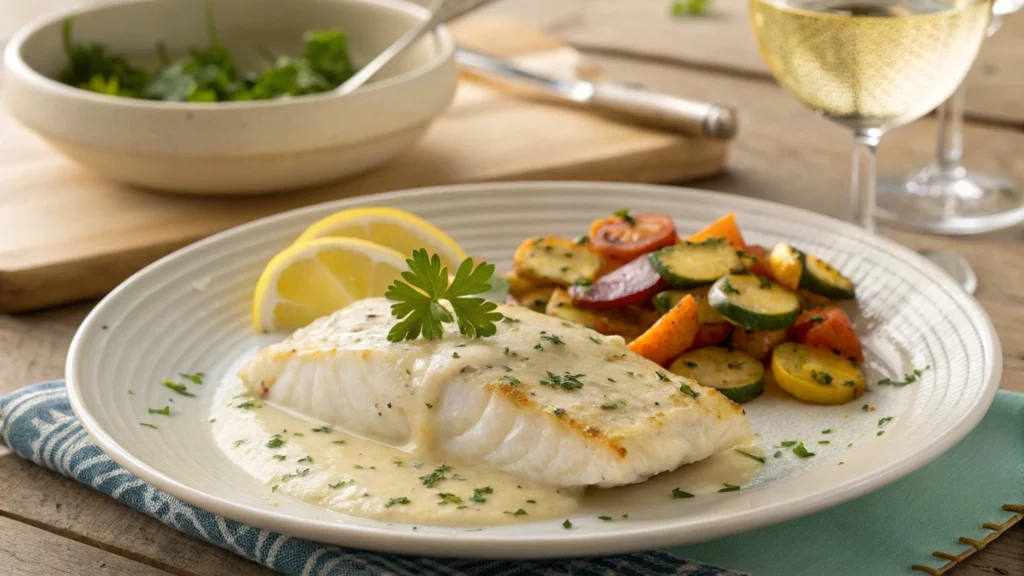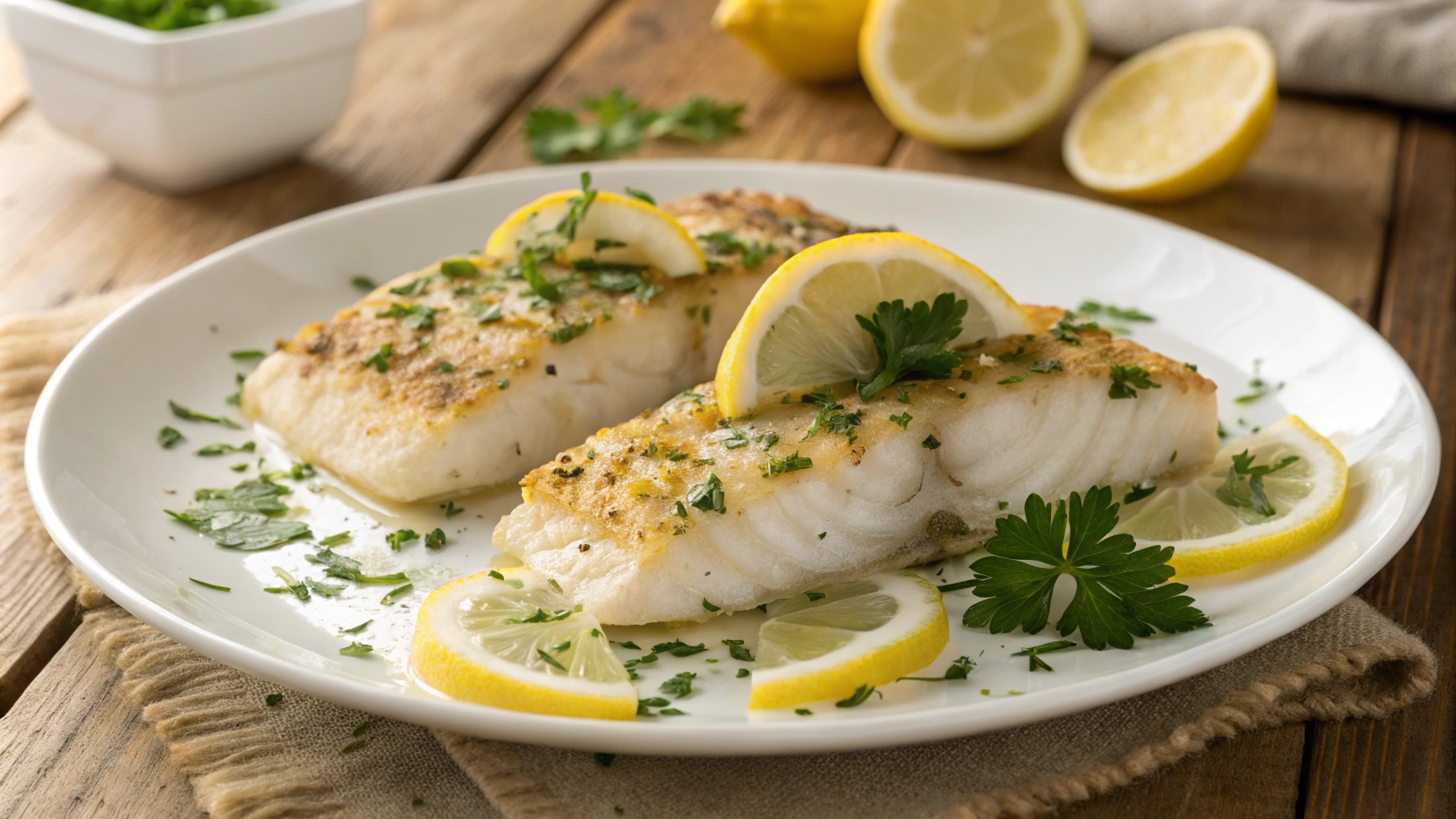White fish is a versatile, healthy, and often underrated star of the seafood world. Known for its mild flavor, tender texture, and adaptability in recipes, it’s a favorite for home cooks and gourmet chefs alike. Whether you’re curious about the types of white fish, their nutritional benefits, or how to incorporate them into your meals, this article covers everything you need to know.
From classic recipes like baked cod to tips on selecting the freshest fillets, let’s dive into the wonderful world .
Nutritional Profile
are not only versatile in the kitchen but also pack a punch when it comes to nutrition. Here’s a closer look at their health benefits:
Culinary Uses and Popular
White fish’s mild flavor and tender texture make it a favorite in kitchens worldwide. Here are some popular recipes to spark inspiration for your next meal:
Baked White Fish with Lemon Cream Sauce

This dish combines the delicate taste of white fish with a rich, tangy lemon cream sauce. It’s a simple yet elegant option for weeknight dinners or special occasions.
Ingredients:
- 4 white fish fillets (such as cod, tilapia, or haddock)
- Salt and pepper, to taste
- 2 tablespoons olive oil
- 1 cup heavy cream
- Zest and juice of 1 lemon
- 2 cloves garlic, minced
- Fresh parsley, chopped (for garnish)
Instructions:
- Preheat the oven to 375°F (190°C).
- Season the fish fillets with salt and pepper.
- In an oven-safe skillet, heat olive oil over medium heat. Sear the fish for 2-3 minutes per side until lightly golden.
- In a separate saucepan, combine heavy cream, lemon zest, lemon juice, and minced garlic. Simmer over low heat, stirring occasionally.
- Pour the lemon cream sauce over the fish fillets in the skillet.
- Transfer the skillet to the preheated oven and bake for 15-20 minutes, or until the fish flakes easily with a fork.
- Garnish with chopped parsley before serving.
For more tasty recipes, explore our recipe article.
Pan-Fried Fish with Lemon Caper Sauce
A quick and flavorful dish, pan-fried white fish topped with a zesty lemon caper sauce is perfect for busy weeknights.
Ingredients:
- Four white fish fillets, such as haddock or flounder
- Salt and pepper, to taste
- 1 cup all-purpose flour (for dredging)
- 3 tablespoons butter
- Juice of 1 lemon
- 2 tablespoons capers, drained
- Fresh dill or parsley, chopped (for garnish)
Instructions:
- Season the fish fillets with salt and pepper. Dredge in flour, shaking off excess.
- Melt 2 tablespoons of butter in a large skillet over medium-high heat until fully melted and bubbling. Add the fish and cook for 3-4 minutes on each side until golden brown and cooked through. Remove and set aside.
- In the same skillet, add the remaining tablespoon of butter, lemon juice, and capers. Stir to combine, scraping up any browned bits from the pan.
- Pour the sauce over the fish fillets and garnish with chopped dill or parsley.
Mediterranean-Style Baked White Fish
This fresh and nutritious dish showcases white fish baked with tomatoes, olives, and herbs, embodying the flavors of Mediterranean cuisine.
Ingredients:
- 4 white fish fillets (such as halibut or snapper)
- Salt and pepper, to taste
- 2 tablespoons olive oil
- 1 pint cherry tomatoes, halved
- 1/2 cup Kalamata olives, pitted and sliced
- 1 red onion, thinly sliced
- 3 cloves garlic, minced
- 1 teaspoon dried oregano
- Fresh basil leaves, for garnish
Instructions:
- Preheat the oven to 400°F (200°C).
- Season the fish fillets with salt and pepper and place them in a baking dish.
- In a bowl, combine cherry tomatoes, olives, red onion, garlic, oregano, and olive oil. Toss to mix.
- Spread the tomato and olive mixture over and around the fish fillets.
- Bake for 20-25 minutes, or until the fish turns opaque and flakes easily with a fork.
- Garnish with fresh basil leaves before serving.
These recipes showcase the versatility of white fish, allowing you to enjoy its delicate flavor in various culinary styles.Part 6: Tips for Selecting and Storing White Fish
Choosing Fresh
When it comes to white fish, freshness is key to ensuring a flavorful and safe meal. Here are some helpful tips for selecting the best fillets:
- Look for Clear Eyes: If you’re buying whole fish, the eyes should be clear and slightly bulging, not cloudy or sunken.
- Check the Smell: Fresh white fish should have a mild, ocean-like scent. A strong, fishy smell indicates spoilage.
- Inspect the Flesh: The flesh should be firm, moist, and free of discoloration. Avoid fish with dry or slimy spots.
- Pay Attention to Packaging: If you’re buying frozen white fish, ensure the packaging is sealed properly, with no ice crystals or signs of freezer burn.
Proper Storage Methods
Storing white fish correctly helps maintain its quality and flavor. Follow these steps:
- Refrigerate Immediately: Place fresh fish in the coldest part of the fridge and use it within 1-2 days.
- Wrap It Right: Keep white fish in its original packaging or wrap it in plastic wrap, then place it in an airtight container.
- Freeze for Longer Storage: For extended storage, freeze white fish in vacuum-sealed bags or freezer-safe containers. Properly stored fish can last up to 6 months in the freezer.
Types of White Fish and Their Uses
1. Cod
A staple in fish and chips, cod has a mild, flaky texture and holds up well to frying and baking. It’s also commonly used in Garlic Butter Shrimp for an extra boost of flavor.
2. Haddock
Similar to cod but slightly sweeter, haddock is excellent for smoking, making it perfect for dishes like fish cakes and creamy seafood chowders.
3. Tilapia
One of the most widely available white fish, tilapia is mild and affordable. It’s great for pan-frying or incorporating into Turkey Wings Made Easy for a seafood twist.
4. Halibut
A firmer white fish, halibut is ideal for grilling and searing. Its meaty texture makes it a great option for hearty seafood entrees.
5. Flounder
A delicate, buttery fish, flounder is best prepared by baking or lightly frying. It’s a key ingredient in dishes like Crab Brûlée when paired with rich sauces.
Frequently Asked Questions
What is the mildest white fish?
Among white fish varieties, tilapia is often considered the mildest. Its subtle flavor makes it an excellent choice for those new to seafood or sensitive to stronger tastes.
How do you cook white fish without it falling apart?
To keep white fish intact, avoid overcooking it. Use a non-stick pan for frying or a baking dish lined with parchment paper. Turning the fish only once during cooking also helps maintain its structure.
Is white fish safe to eat during pregnancy?
Yes, is generally safe during pregnancy. It’s low in mercury and high in essential nutrients like omega-3s and protein. However, always ensure it’s fully cooked before consumption.
Can white fish be frozen and reheated?
Absolutely! White fish freezes well when stored in airtight packaging. To reheat, thaw it in the fridge overnight and warm it gently to prevent it from drying out.
Sustainability and Ethical Practices in White Fish Harvesting
The Importance of Sustainable Fishing
Sustainable fishing practices are essential to protect marine ecosystems and ensure the long-term availability of white fish. Overfishing can lead to the depletion of popular species like cod and haddock, disrupting the delicate balance of ocean habitats. By choosing fish from sustainable sources, you can support the health of marine life and the fishing industry.
Certifications like the Marine Stewardship Council (MSC) label help consumers identify sustainably harvested white fish. Look for this label when shopping to ensure your purchase aligns with ethical practices.
How to Choose Sustainable
Here are some tips to make eco-friendly seafood choices:
- Check for Labels: Look for certifications like MSC, ASC (Aquaculture Stewardship Council), or similar regional standards.
- Opt for Local Fish: Supporting local fisheries reduces the carbon footprint associated with transportation.
- Diversify Choices: Choosing lesser-known species like pollock or hake helps reduce pressure on overfished stocks.

